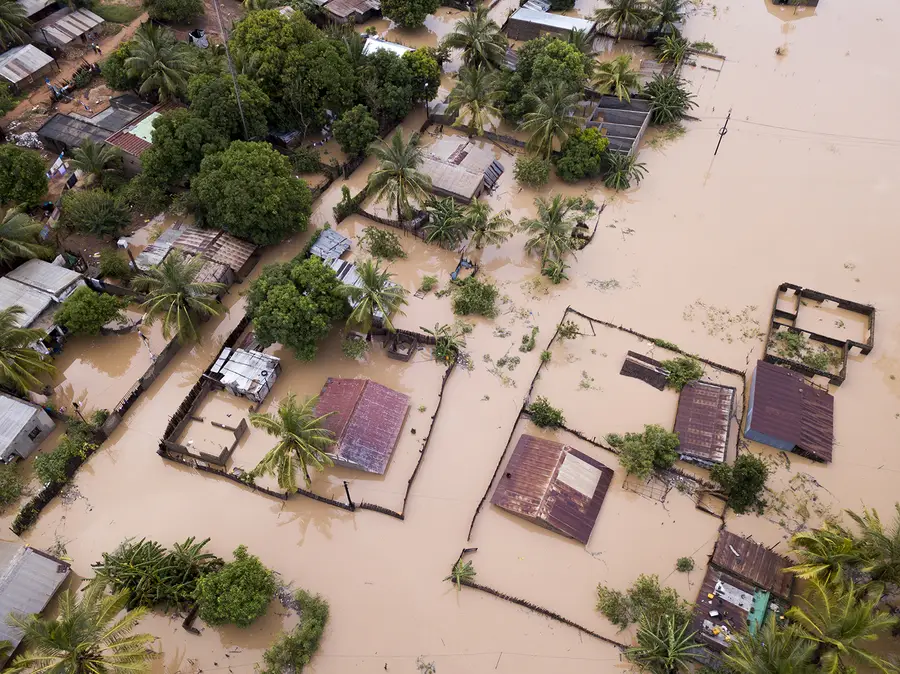
Urban water and sanitation infrastructure is prone to failure due to a multitude of causes ranging from inadequate or inappropriate design, poor workmanship, weak management and a lack of operations and maintenance plans. However, one of the most devastating causes of damage to water and sanitation infrastructure is sometimes outside our control and naturally occurring: Flooding.
Weekly and even daily, critical urban water infrastructures are damaged or disrupted by flooding caused by heavy rainfall, storms, cyclones. These events upend the lives of the city residents with displacement, property damage, disruption in productivity and, at worst, the loss of lives.
In cities whose water and sanitation infrastructure is not designed to withstand higher levels of flooding, the results can be disastrous and costly. Water infrastructure, such as treatment plants and sewerage pumping stations, can be out of commission for months due to flooding. In informal settlements or slums, pit latrines tend to overflow with fecal waste, polluting the environment and contaminating drinking water.
The Organisation for Economic Co-operation and Development (OECD), estimates that floods cause more than $40 billion in damage annually to urban infrastructure worldwide. This figure does not even factor in the tragic toll on humans in terms of lives lost, people displaced, or livelihoods washed away.
Flood Resilience, Adaptation and Mitigation
In many cities where floods have occurred, the urban water infrastructure—including intake and treatment plants—is among the first to be adversely affected. Given the reality of flooding and related costs, there are two main things cities can do:
- mitigate flooding through better planning and preparation, and
- build resilience to flooding by adapting existing infrastructure.
Both come at a cost. But city governments grappling with the question of whether to build their flood resilience should consider the risks of inaction.
The city of Beira, Mozambique illustrates the dire costs of underinvestment in flood-resilient infrastructure. Nearly 90 percent of this large port city was destroyed when cyclone Idai raged inland in March 2019. The catastrophe dragged on as rainfall continued for days, causing massive flooding.
A master plan to improve the city’s drainage had already been proposed, but the Government was not able to secure funding for the improvements.
Following the fatal cyclone’s widespread destruction, Dutch water experts estimated it would cost $888 million to rebuild with flood-resilient infrastructure, reconstruct the primary drainage system and improve coastal protection– certainly far more than it would have cost to install flood resilient infrastructure in the first place.
Urban water infrastructure found in coastal and low-lying areas, like Beira, is particularly prone to the effects of flooding. But examples of fragile water infrastructure are easy to come by even in non-coastal areas, especially in cities in the global south. Lusaka, Zambia, for example, lies nearly 1,000 kilometers from the nearest ocean, yet suffers from continual flooding due to poor drainage over uneven land.
I know this all too well: Lusaka is my city. I grew up noticing drainage channels filled with trash and crowded clusters of makeshift homes in low-lying areas that always churned with dirty water following a heavy rain. As with so many urban challenges, the poor often bear the brunt of poor management of urban water infrastructure.
Spend on Flood-Resilient Infrastructure Now to Save Later
In low-lying or coastal cities and indeed even non-coastal cities that are prone to flooding, it is not a question of whether floods will take place, but rather when. This is the undeniable reality as climate change, urbanization, and other human activity exacerbates flooding. It is therefore critical that governments in these flood-prone cities allocate sufficient funds, plan, and build flood-resilient infrastructure.
Based on many years of experience managing urban water and sanitation projects in Africa, I've found that the greatest success comes when governments take initiative in developing and implementing the following:
- Improved information and knowledge of weather forecasting data and the ability to readily transmit that information and data to users
- Emergency or Disaster Risk Reduction (DRR) plans, including emergency generators and internal communication plans
- Retrofits for existing infrastructure, for example elevating water or fecal sludge treatment plants, creating diversion channels, etc.
- Coordination/advocacy/joint planning with water utilities and communities
- Proper urban planning combined with installation of green infrastructure solutions like permeable concrete or pavements, green spaces, river normalization, and sometimes informal settlement relocation.
- Enforcement of any zoning, drainage channel operation and maintenance, and solid waste management—and community awareness-raising to ensure compliance.
On June 4, I will be chairing a session on modelling flood risk and resilience to identify solutions during the IWA Digital World Water Congress. During this session, panelists will share additional ideas and experiences on developing resilience to flooding and improving water management through strategies, plans, and assessments.
Cities often do not put building flood resilience at the top of their budgets. But acting now is the only way to prevent more costly mitigation efforts after the next flood.

